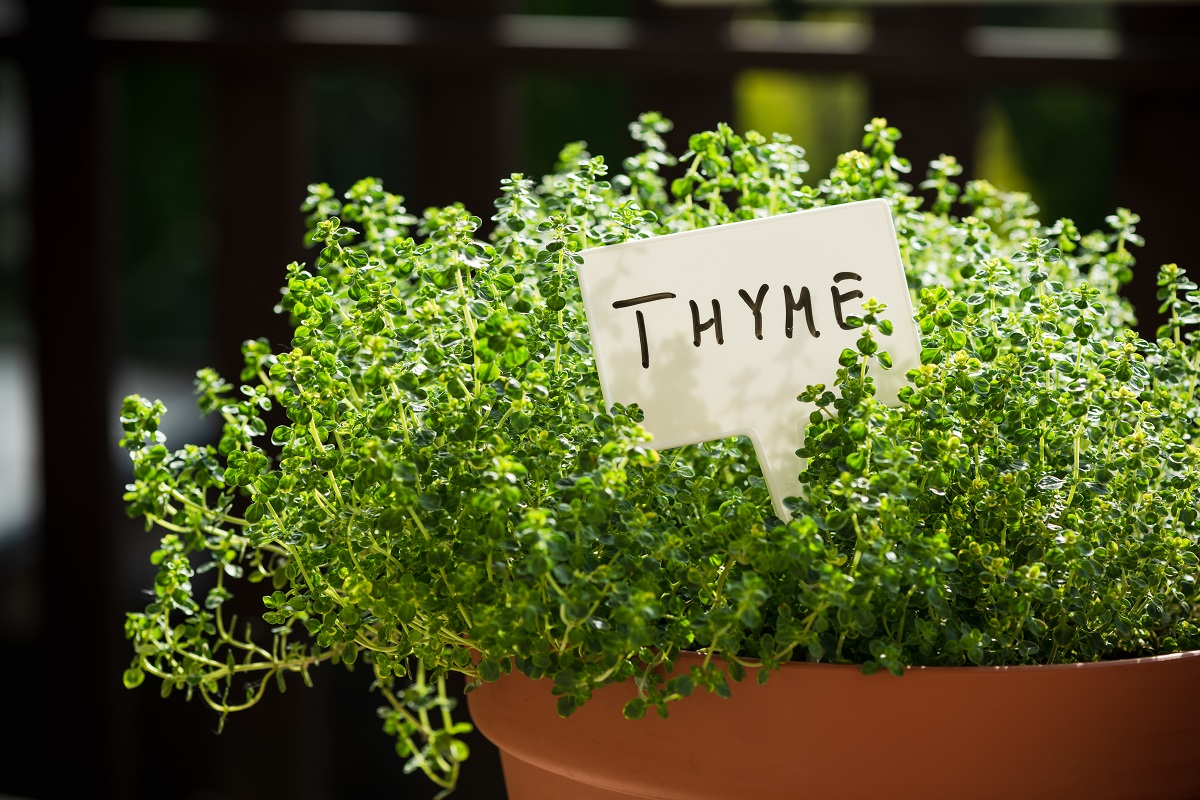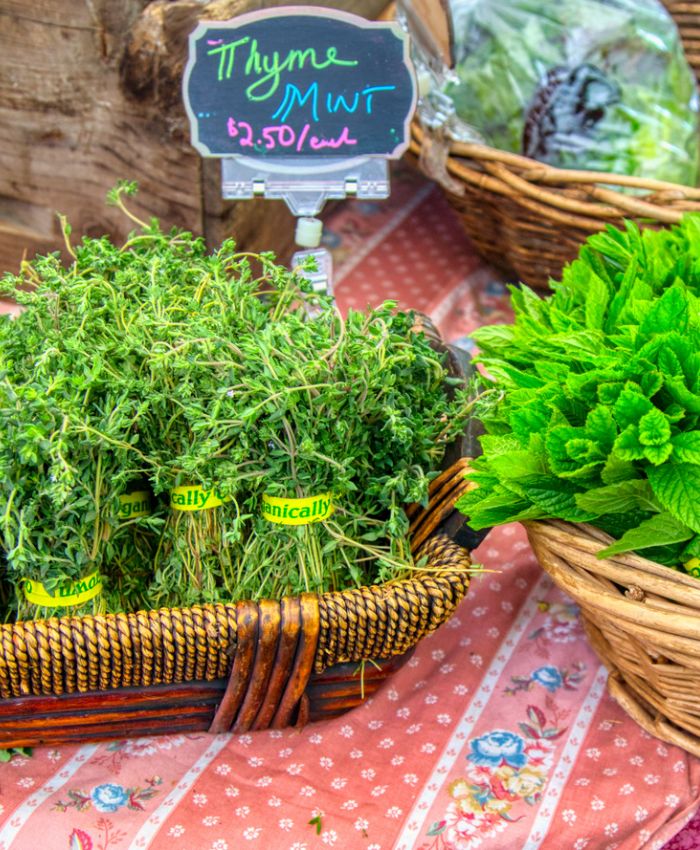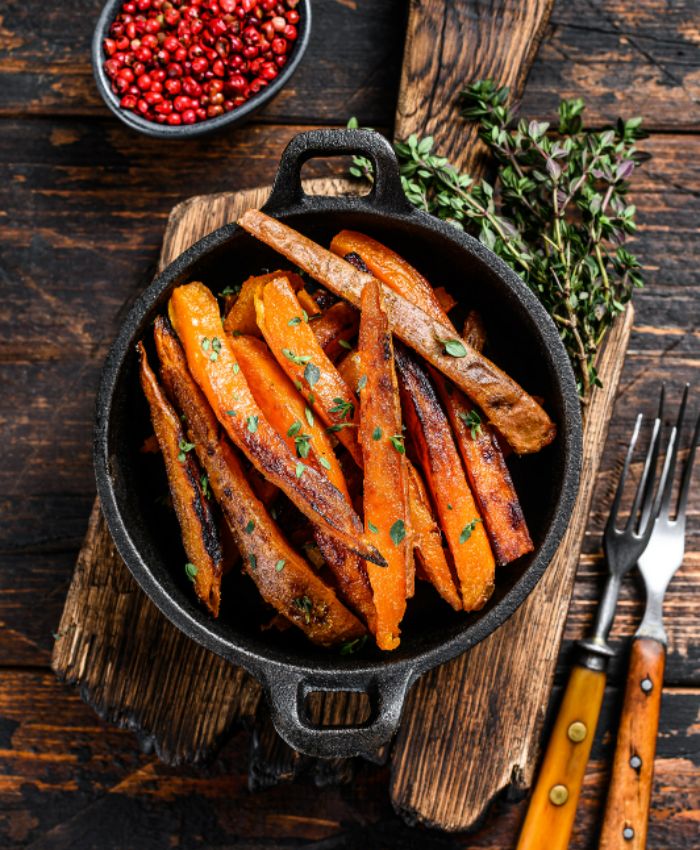Thyme is a versatile herb and a must-have in the kitchen. Its subtle flavor is perfect for seasoning a wide variety of foods such as meats, stews, vegetables, soups, and salad dressing. And you ou can even make thyme tea.
If you have ever wondered what thyme tastes like and what to do with it, read on because you will find out about this popular herb.
The thyme plant is a perennial herb that belongs to the mint family. It has been in use for centuries in various cultures and cuisines. Thyme is now grown all over the world and is one of the most popular herbs used in cooking today.
Thyme’s origins are in Southern Europe, where it was used by Ancient Greeks and Romans to repel insects, purify the air, and as an antiseptic on wounds.
Thyme’s active antiseptic compound, thymol, was thought to protect from infection and was used to treat skin lesions.
There is also evidence that the Romans believed the herb was an emblem of bravery and strength, especially with respect to the military.

What’s the difference between fresh thyme and dried thyme?
Dried thyme is fresh thyme that has been picked and dried or dehydrated. Dried thyme can be used as a substitute for fresh thyme in most recipes.
Since dried herbs have a more concentrated flavor than fresh, you will need to use less dried thyme when cooking with it. The general rule of thumb for swapping dried herbs for fresh herbs is you should use 1/3 of the amount of dried herbs. So if a recipe calls for 1 teaspoon of fresh thyme leaves, you would use 1/3 teaspoon of dried thyme.

What does thyme taste like?
Thyme has a unique balance of flavors and depending on the variety, you will taste different notes such as an earthy, minty flavor with a hint of citrus. You might also notice slightly sweet floral notes as well as a peppery flavor.
While it sounds like a lot of different flavors, there are only subtle differences. That is why the taste of thyme is a great addition to so many dishes. This flavorful and aromatic herb adds subtle flavors flavor without overpowering any dish.
There are over 300 varieties of thyme, these are the most common varieties today.
The Lemon thyme plant has small shiny bright green leaves and is very similar in appearance to common thyme.
It is often used in cooking because of its pleasant citrus aroma and flavor. It’s a versatile herb, as it can be used in both sweet and savory dishes.
Lemon thyme’s flavor is minty and earthy just like common thyme but with a slightly different taste, you will notice a stronger flavor of lemon.
As its name says, common thyme is the most common thyme used in cooking. It also has shiny bright green leaves with a slightly earthy scent and flavor with essences of minty, flowery, and a slight lemon taste.
Common thyme is used by itself or combined with other herbs in cooking to flavor soups, stews, poultry, and seafood dishes.
Creeping thyme is commonly used as an ornamental ground cover in borders, rock gardens, and herb gardens.
Unlike most thyme plants, creeping thyme grows horizontally to form a ground cover, and does not grow as tall as other varieties. Even though creeping thyme is considered a ground cover it is edible, though it is not used that much in cooking.
German thyme is a hardy variation of common thyme. It is resilient to frost and is also referred to as winter thyme.
Germany thyme has smaller, slightly rounded evergreen leaves and is the next most widely used variety of thyme in cooking. German thyme has the same flavor as common thyme and is popular more for its heartiness.
Thyme is full of vitamins and minerals that promote good health and support the immune system. In addition to cooking with thyme, there are numerous health benefits associated with thyme.
It has been used since ancient times to help with coughs and sore throats, boost immunity, reduce inflammation fight acne, and more. You can read more about the health benefits of thyme here.

12 Things About Thyme and Its Unique Uses
What does thyme taste like?
Thyme is a popular herb that has been used for centuries as medicine and food. It goes by many different names, such as “Old Woman,” “Mother of Thyme,” and “Wild Marjoram. ” This herb is what gives dishes like stuffing their characteristic flavor. The taste can be described as sweet and savory, with hints of peppermint, lemon, oregano, or cinnamon.
How to use thyme?
Thyme can be used fresh or dried, and works well in soups, roasted vegetables, pasta, sauces, pizzas, chicken, stews, eggs, fish and seafood, lasagna, pork, lamb, or beef.
What flavor goes with thyme?
Lemon Zest: The bright, citrusy flavor of lemon zest complements thyme’s earthy taste in seafood dishes, vinaigrettes, and poultry rubs. Black Pepper: Adding a dash of freshly ground black pepper to a dish with thyme can enhance the overall flavor, making it a versatile pairing for many savory dishes.
What are the different types of thyme?
Here are some of the most common types: Common Thyme (Thymus vulgaris): This is the most widely used variety, known for its classic flavor. It’s versatile and can be used in a broad range of dishes. Both English and French thyme are varieties of Thymus vulgaris.
